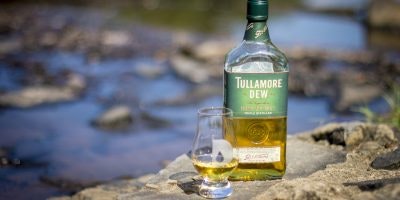For more than two centuries, liqueurs have been an essential part of European drinking culture. Thought to have originated in Italy and later migrated to France, these sweet, bitter and herbal elixirs were—and often still are—used to prepare the palate for a meal (aperitivo or aperitif), or to aid in post-feast digestion (digestivo or digestif). Luckily, many of these liqueurs are still in production today, with flavors as big now as they were when they first hit the market. They’re also exponentially easier to find in liquor stores than ever before. Want a taste of the 19th Century in your home bar? These five historic liqueurs are more than a century old and are as delicious and useful as ever.
Luxardo Maraschino
Few fruit liqueurs are as essential to modern bartending as Luxardo Maraschino. Just shy of its 200th birthday, this wonderfully balanced Italian liqueur launched in 1821. Made using the original recipe, the liqueur calls for Marasca cherries to be infused into neutral spirit for two years. The cherry infusion is distilled then aged for 12-18 months in large Finnish ash wood vats. Finally, it is sweetened and bottled. It’s easy to spot, thanks to its red and green bottle wrapped with straw. But personality isn’t the only thing it adds to a home bar—it’s versatile too. A must for cocktails like the Aviation and The Last Word, you’ll find plenty of uses for Maraschino in modern bar books.
Yellow Chartreuse
Following the creation of Green Chartreuse in 1737, this milder version of the beloved liqueur came to fruition 101 years later in 1838. It’s also made from 130 different plants and comes by its unique coloration completely naturally. The exact recipe, ingredients and aging process are known only by two Chartreuse monks at the distillery in France. Traditionally consumed as an after dinner drink or digestif, Chartreuse is an irreplaceable part of a bartender’s arsenal. Herbaceous Yellow Chartreuse is delightful over a simple ice cube, but also makes a fabulous Swizzle.
Averna Amaro
More than a handful of incredible amari have emerged from Italy over the past two centuries, but Averna may be the most ubiquitous. That’s for good reason. This bittersweet Sicilian amaro was first created in 1868 and its owners, who gave the liqueur their name, spent more than a century spreading the word to ensure Averna not only survived, but thrived. Today, the recipe and means of production remain unchanged, so whether you’re drinking the amaro in a Spritz or Sour, you’re tasting exactly what Sicilians did in the mid-19th Century.
Gabriel Boudier Crème de Cassis de Dijon
First produced in 1874 in Dijon, France, Gabriel Boudier’s blackcurrant liqueur was one of the first of its kind. This nearly century and a half old elixir is made by extracting macerated berries in alcohol, then dissolving a touch of sugar in the mixture once it has cooled. Though lost to obscurity for many years in the U.S., cassis is seeing a recent resurgence. Many more brands are creating their own take on this classic and it’s now a favorite among bartenders. Use it in small quantities to add richness, depth, and a bit of spunk to just about any cocktail. And don’t forget to try it in the classic Kir, which blends white wine with cassis.
Bénédictine
As the story goes, this herbal French liqueur was first made by Benedictine monks in Normandy in 1510. In the years that followed its creation, the monastery supposedly burned to the ground, taking the recipe with it. That is until, in 1863, a well-to-do wine merchant named Alexandre Le Grand discovered the recipe in a book and relaunched the now iconic liqueur. Made with 27 herbs and spices, Bénédictine is essential for making mainstays like the Vieux Carré and the B&B. A mild and comforting herbal flavor also lends the liqueur to experimentation, or simple enjoyment over ice.
With Distiller, you’ll always know what’s in the bottle before you spend a cent. Rate, Review and Discover spirits! Head on over to Distiller, or download the app for iOS and Android today!


